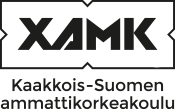Visual storytelling in games (5 cr)
Code: GD00DT43-3004
General information
Enrollment
06.04.2022 - 22.04.2022
Timing
01.08.2022 - 31.12.2022
Number of ECTS credits allocated
5 op
Virtual portion
2 op
RDI portion
1 op
Mode of delivery
60 % Contact teaching, 40 % Distance learning
Campus
Kouvola Campus
Teaching languages
- English
Seats
10 - 25
Degree programmes
- Degree Programme in Game Design
Teachers
- Marko Siitonen
- Brenda Jiménez
- Sarah-Jane Leavey
Teacher in charge
Brenda Jiménez
Groups
-
GDKV21SPGame design, full-time studies
Objective
You know how to set a visual theme to tell a story.
You are able to create a rhythm of action, which supports your story.
You are able to utilise camerawork, sound and acting together with set-up design, props and characterisation in your story’s timeline.
You know the basics of the camera angles, lenses, depth of field, aperture and other camera techniques needed in gameplay visualisation.
You know how to storyboard to communicate the story based on camera frames and angles.
You know the basics of the sound work for games.
You know the basics of light design for games.
You know the basic editing methods for storytelling.
You know the basic production methods for audiovisual work.
You learn the basics of how to show your character on screen so that it supports the story.
Content
How to generate a sense of time and space?
How to set a mood in a game through visual means and character tasks?
How to create suspense, thrill or comedy in a scene?
How to visualise missions of the character in a scene?
How to create a sense of continuity and phase a rhythm of the action in a scene?
How to tell a short story?
How to visualise the scene with a camera?
How to tell the story with sound elements?
How to light up one scene?
What editing methods can be used for storytelling?
How to provide a character in front of the camera?
How to produce a simple audiovisual story?
Materials
Lectures, videos, links and tutorials on Learn.
Teaching methods
Learning route based on a working week
You will attend teaching and guidance sessions as specified in the schedule. Your study routine is determined by the scheduled group sessions and by the self-study assignments.
Learning route that accelerates the studies
If you have acquired prior learning in the subject (fully/partially), contact the teacher in charge prior the course to discuss wether you have the competence required and what are the methods of demonstrating that competence.
If you are unable to attend all the classes due to other courses, you are required to complete the learning assignments independently.
Work-based learning route
You need to contact the course teacher prior the course to agree on development assignments that you will perform at your work place. You are required to prove your learning both in theory and practice by giving a presentation at Game Design show and tell day.
Employer connections
RDI will be intergrated where possible
Exam schedules
Deadlines:
– In order to benefit from the dedicated feedback sessions students must have at least partially completed the assignments on review at that time.
– If a student misses the deadline for an assignment feedback session, no assurance of feedback at a later date can be given. Current works take precedence.
– If a student can not achieve a required deadline the lecturer must be informed and an extension will be negotiated.
– Unauthorised late return of course assignments will have an effect on final grading. (Between 1 and 2 points deducted)
Student workload
Students complete assignments independently. In class, students will receive feedback and deepen their expertise. The assignments are mostly based on group work
Further information
Further information
– Demonstrations and lectures (streamed via Teams) provide relevant theoretical content.
– Students complete a series of analysis exercises and assignments in groups with the help of instructions provided on Learn.
– Students will receive dedicated feedback sessions on their assignments at regular intervals
– Students will deepen their expertise in the use of professional language related to visual scripting, storyboard drawing techniques, and planning a shooting plan for a game trailer.
Evaluation scale
1-5
Assessment methods and criteria
Assessment Methods:
Collaborative Learning outcomes (Group works)
Peer review and self-evaluation
Register of Attendance
Adherence to schedules and deadlines
Activity Checklists
Performance Rating scale for classroom and homework assignments
Assessment Criteria
Students ability to develop ideas, logical thinking, creativity, ability to communicate one’s ideas both verbally and visually, quality of work, ability to follow instructions, ability to work to deadlines, level of attendance, activity and contribution to class, evidence of improvement in technical/design/aesthetic skills.
Grading. Fail, Incomplete, 1: pass, 2: pass+ 3:commended 4: Highly commended 5: Distinction
